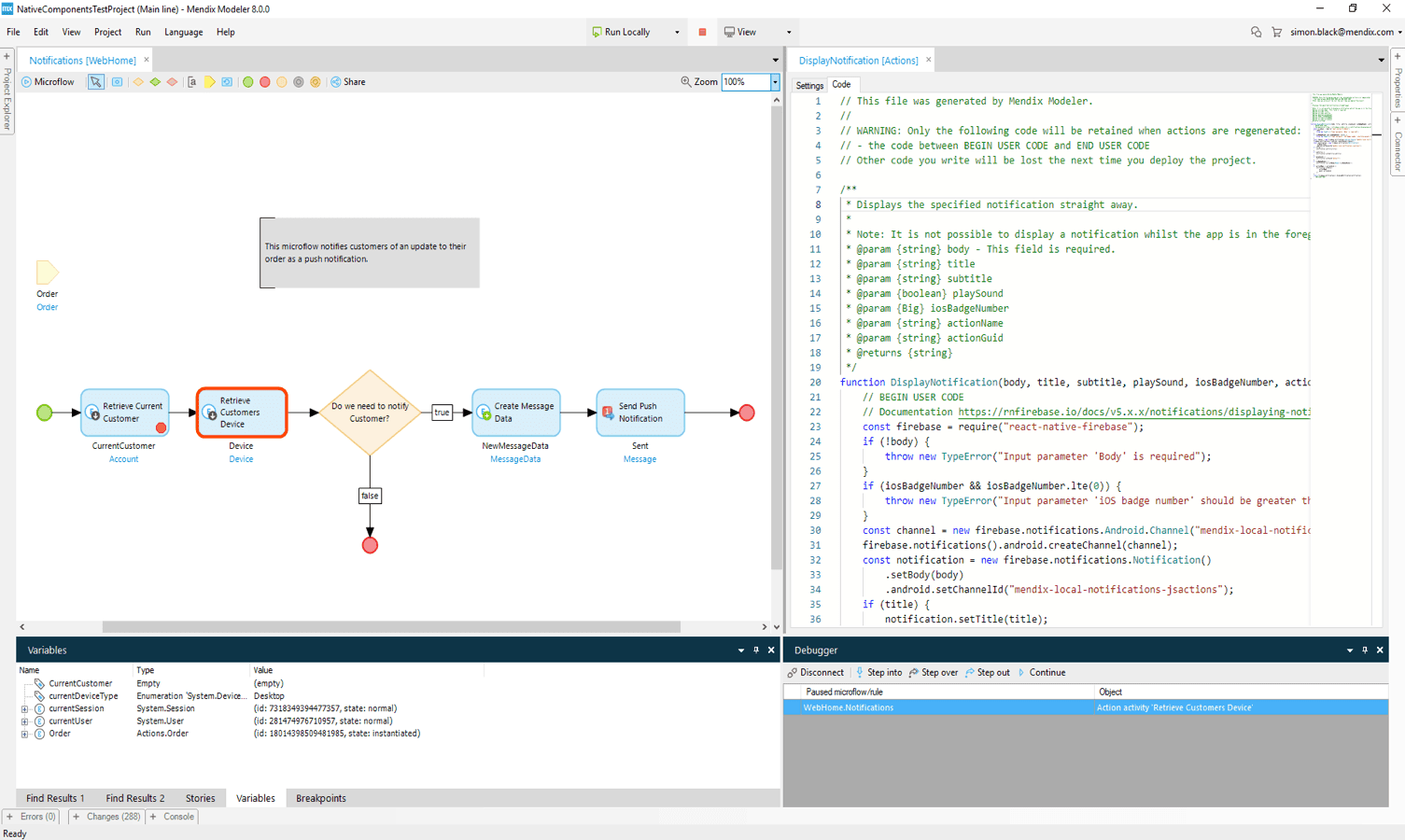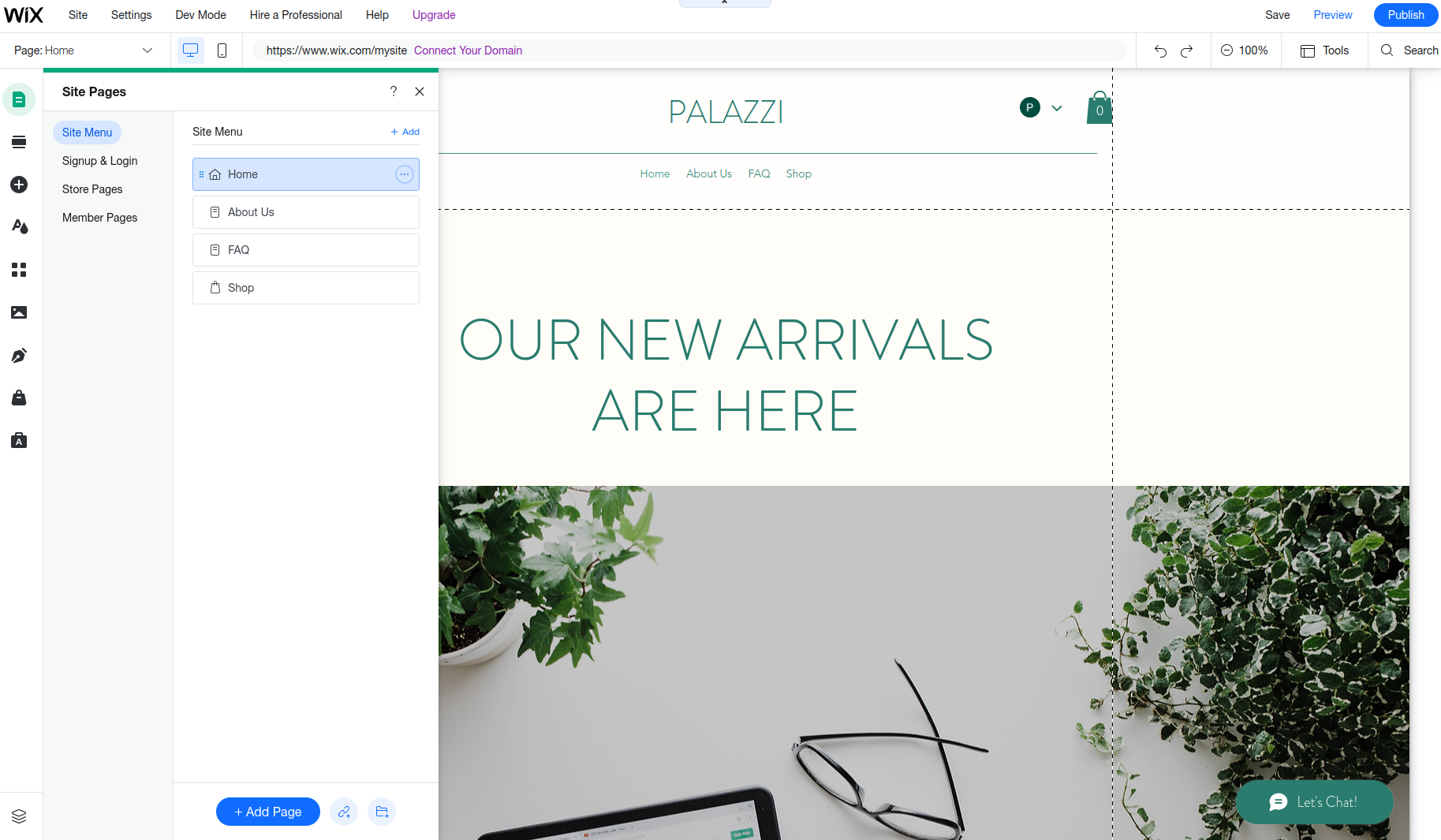Low-Code vs. Zero-Code: When to Use What

Create a website without programming skills, make a chatbot, an online store, a mobile app, automate a business process without the participation of developers. Do you think all this is impossible? Well, you definitely need to learn more about low-code and zero-code.
These software development approaches are promising areas for business. 26% of executives name low-code and zero-code as priority investments: during the pandemic, investments increased from 10% to 26%. The cost of developer labor is rising, so now it is not easy to find a good specialist. Small businesses cannot always afford such a developer because of the limited budget. At the same time, establishing an online presence is crucial in the digital age.
In this article, we will explain the difference between low-code and zero-code and tell you when each of these methods is used.
What is Low-Code
Low-code is the development of software via a visual drag-and-drop interface with minimum hand-coding. In low-code development platforms, the user moves visual blocks of existing code to create a product with the desired functionality. Pre-built components speed up work with typical tasks and eliminate repetitive actions. However, you still have to write code for individual solutions, settings and personalization. Integrations with other systems are supported, there are also built-in services.
Low-code does not exclude traditional development and programmers, but speeds up their work. Even manual coding is not always a project from scratch: professional developers sometimes reuse templates of their own code to save time.
Low-Code Platforms
ELMA 365 is a platform that automates and robotizes business processes and CRM. Here you can create corporate applications using minimum coding.
Mendix is a platform where you can use both a no-code environment and an interface for professional developers. The platform let you create applications for iOS and Android, which are deployed in cloud in one click.
WF Core is a platform that manages data from any systems, even from CRM. The service has both graphical and API interfaces for working with business processes.
 Mendix interface
Mendix interface
Advantages of Low-Code
- Speed
Pre-built components and process automation in development speed up the creation of a new digital product. No long preparation is needed — you can create a working tool in a few days.
- Flexibility
On the one hand, the need for code in low-code platforms complicates the work. On the other hand, it gives flexibility in product creation. Standard drag-and-drop builders are convenient, but limited when it comes to solving non-standard tasks. Hand-write code allows you to scale the solution and expand the functionality of the product.
- Development cost
There is no need to inflate the staff of developers, whose salaries in the market are growing along with their requirements for employers. Compared to developing from scratch, a low-code project will take fewer hours of work, so business costs will decrease.
- Reducing the burden on IT
Making a product on a low-code platform is a lifesaver when the IT department is on fire and there are no free hands. While IT specialists are engaged in priority projects that require deep knowledge, employees without programming skills can create, for example, an application for internal company tasks. The role of professional developers remains minimal.
- Low risks
Investments in low-code development are lower than in traditional one. If you create an MVP ("minimum viable product") in the drag-and-drop builder and fail, it will not be as bad as if you spent months developing, investing resources, and, in the end, did not get a positive response from the market.
Disadvantages of Low-Code
Programming skills will still be required if the basic functionality of the low-code platform is not enough. Therefore, this development method is not suitable for all companies.
Vendor lock-in. Not all development services provide open source and give free rein to developers. What's more, if you want to switch to a different platform, it will not be easy.
What is Zero-Code, or No-Code
Zero-code, or no-code, is an approach of creating websites and apps without code. No-code development is suitable for citizen developers — ordinary users who do not know how to write code. A zero-coder creates a product via a visual drag-and-drop interface where there is no code at all.
Zero coding is as simple as possible. It’s easy to learn how to work on the platform. You don’t need in-depth knowledge of how digital products work. It is enough for the user to understand the future functionality and be able to assemble a solution for it from pre-built components. As a result, the company does not have to hire professional developers.
Zero-Code Platforms
Airtable is a tool for creating online spaces for team work. It is based on tables with flexible settings and data visualization. There are also such features as a content calendar, web forms and Kanban boards.
Adalo is a platform for creating interactive applications for mobile and web devices in a drag-and-drop interface. The application has a payment system and the system of tracking user actions.
Wix is a website builder without the need for code. You can create a website from scratch or using a template. There are ready-made options for landing pages, online stores and blogs.
 Wix interface
Wix interface
Advantages of Zero-Code
Some advantages of zero-code platforms coincide with the advantages of low-code platforms: speed, low risk of financial losses, low cost of development and reduced presure on the IT department.
But there are other benefits as well.
- Maximum simplicity
Any no-code platform is a tool without code, which should be understandable to the average user. Simple and intuitive interfaces make such platforms easy to work.
- Information support
No-code platforms are designed for inexperienced users. That’s why it is easy to find manuals and video tutorials explaining how to work with the platform.
 Landing page courcebook on Tilda
Landing page courcebook on Tilda
- Low risk of errors
If you use hand-write code in the platform, there is a chance that you will make a mistake. In a zero-code platform, there are only pre-built modules with code that have already been checked and corrected by the developers more than once.
Disadvantages of Zero-Code
- Inflexibility and lack of customization. Only the functionality of the platform is available. No-code constructors have enough opportunities, but they are not suitable for non-standard ideas.
- Isolation from the IT department. Creating products on a no-code platform without any control is a risk. Such a self-made tool without the participation of the IT department may be incompatible with other systems and harm security.
- Software dependency. It’s not easy to scale a zero-code solution to new conditions.
Where to use low-code and no-code
Both methods are used for similar purposes. On low-code and zero-code platforms, you can:
- Build websites, browser or mobile applications, chatbots.
- Collect contact data and automate the process of sending messages to customers.
- Create tools for automating business processes. For example, it is possible to pull data from different marketing channels into one report automatically using no-code software.
- Launch and validate the MVP. If the project fails, the company will not lose as much money as it could with full development.
- Test hypotheses or functionality.
- Assemble a prototype of a future product.
Marketers, product managers, analysts, designers, and even entrepreneurs work with no-code platforms. No-code is salvation at the start of a business. Previously, it was impossible to make a website without money or programming skills. Now the no-code approach is available to everyone.
Development on no-code platforms has even become a profession. People without programming skills master platforms and offer their services to create business tools.
Differences between low-code and zero-code
Zero-code and low-code refer to PaaS (Platform as a Service) — cloud platforms as services. They also refer to aPaas (Application Platform as a Service) — application builders. At the interface level, the platforms are similar: the product is created using pre-built components, but low-code platform have fields for the code. Other differences:
| Zero-code | Low-code | |
|---|---|---|
| Code skills | Not needed | Needed for customized blocks |
| Interface | Visual blocks with ready-made code | Visual blocks and fields for writing code |
| Development flexibility | Limited by platform functionality | High due to the possibility of additional coding |
| Code errors | Low risk | There is a risk due to hand-coding |
| Scalability | Platform restrictions | It is possible with the help of services and open source |
Resume
Low-code is development in a visual interface with pre-built modules, but also with the ability to write code manually. At certain stages it does not require professional knowledge, but for non-standard solutions it is necessary that the code be written by a professional developer. Flexible development method with scalability.
Zero-code, or No-code, is development without code and special knowledge. This approach is not flexible enough for custom solutions, but simple. Errors are eliminated because there is no hand-coding.
On zero-code and low-code platforms, you can create websites, mobile apps, automate business processes, test hypotheses and launch MVP without additional cost. Both methods speed up and simplify the development process, but do not compete with the work of a programmer.
You might be interested in:
Discovering ways to better know your customers for efficient work with them?
Read moreRead how the insurance company increased repeat sales and subscriber engagement through marketing automation.
Read moreKeep wondering how to maintain the reputation of a brand online?
Read more